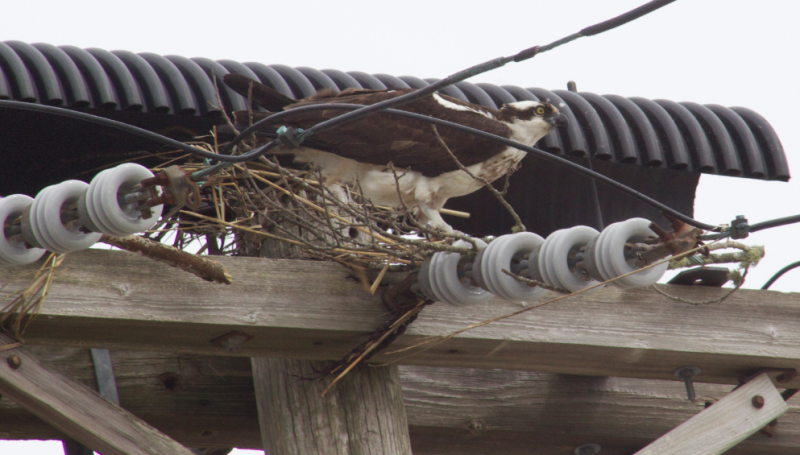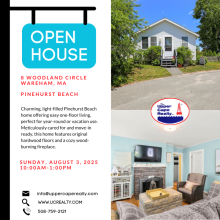NSTAR's efforts (or lack thereof) leave Onset ospreys homeless
Last summer, after a family of ospreys left their nest on top of an Onset utility pole, NSTAR removed the nest and promised that the utility company would build a new platform for the birds to return to this spring.
Those ospreys have returned to the Stone Bridge pole, only to find their nest gone with no replacement. Neighbors say the birds are struggling to build the nest back in the same place.
Last July, NSTAR spokeswoman Priscilla Ress said the company would be building platforms where the ospreys could make their new homes in the spring.
“When the ospreys return, there’s going to be a prevention device [on the utility pole] and, on the platform, there’s going to be a partially built nest,” Ress said.
Less than a year later, the ospreys have come back -- not to a partially built nest, but rather to the same pole, prevention device and all.
"The birds will just keep trying," said Beverly Cummings, who lives on Great Neck Road. She said that so far, the ospreys' attempts have been unsuccessful. "It was such a nice attraction last year."
"There was no commitment made that I'm aware of to put up a nest, though we generally will take a look at a situation on a case-by-case basis to determine if one is needed," said NSTAR spokesman Michael Durand on Tuesday. He said Ress must have been misunderstood last year. "In some cases, such as this one, I don't believe there is a good place to put a pole or a platform even if we had decided to do so."
He said in the next few days, someone from NSTAR will check the pole to see what, if anything, can be done.
"The cover is there for their protection," Durand said.
He also said the cover won't be removed, as it was put there to protect the birds from electrocution, the nests from catching fire, and the possibility of power outages.
Durand said last May NSTAR installed four platforms in the woods around town -- off of Farm to Market Road, Charge Pond Road and on the Wareham/Bourne border -- but that it's not easy to do in more residential or populated areas.
He said there are limited spaces for the platforms to be built, as they can't be in line with the utility pole, can't be in the roadway and can't be in other protected areas such as waterways where it is difficult or impossible to obtain a permit.
"We have to evaluate every situation by each particular set of circumstances," Durand said.
Last year, NSTAR did a significant amount of work on the pole at Stone Bridge, according to Durand, installing additional equipment to finish their work while not interfering with the baby birds in the nest.
He also noted the decades of work done by NSTAR and its parent company to protect and restore the osprey population in Massachusetts.
Due to the pesticide DDT, the population fell to as low as 11 in 1964 before rising once DDT was banned in the 1970s.
But each day on Stone Bridge, the ospreys bring sticks and brush to the top of the pole to build a nest, only to see it fall apart.
"I see them bring the sticks up, and they just fall to the ground," said Robin Allen, who walks along the beach by Stone Bridge every morning. "It's just sad to watch."












